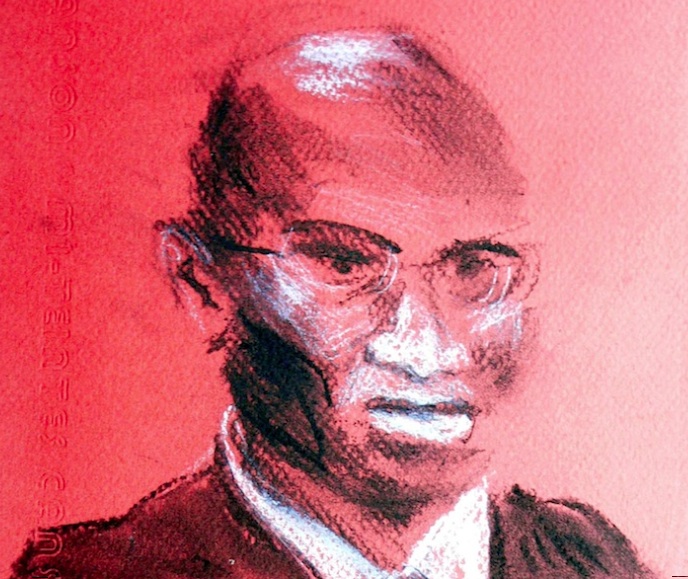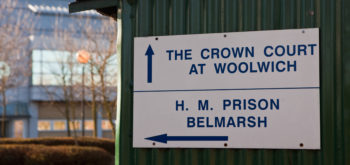Over the last few weeks social media channels have been awash with complaints relating to security searches at court buildings, practitioners have been pondering why they have to be searched at all, and why on occasion the interaction between themselves and security staff has been so poor.
As a result of some recent posts the chief executive officer of HM Courts & Tribunals Service (HMCTS), Susan Acland-Hood invited me to speak with Ministry of Justice officials in order to discuss some of the challenges they face, and what they have planned for the future. I am grateful to Carolyn Mitchell, senior project manager for the Professional Users Access Scheme, and Matthew Braham, HMCTS’s head of security and safety, for their time.
The Security Risks
The threat to security on the court estate has been rising in recent years with some 300 or so incidents per year of harm or attempted harm to others. The challenges differ according to the court, with the family and civil jurisdictions experiencing particular problems.
At the same time there is perhaps a lack of deference and respect for the judicial system which feeds into a rise in relation to incidents of disorderly conduct.
Whilst incidents of very serious harm are fortunately rare there have been a number of incidents where judges have been attacked or have faced attack. In addition, the vulnerabilities of many court users can lead to self-harming attempts and the hiding of razor blades is a particular problem.
The court service constantly keeps the risk assessment under review, and this is discussed with senior judiciary.
The current front of house experience
The court estate was described as being ‘complex’, with pressure on front entrances and lots of different issues presenting themselves.
Staff turnover is high, and this inevitably leads to variance in practice and challenges in enforcing consistency. On occasion inconsistency can be innocently explained, so for example a recent incident in relation to confiscation of a drinks can had to be seen in light of an apparent local direction following a threat to a Judge. So, an innocent misunderstanding. So too with wig tins!
A new level of stupidity. Staff at Croydon mags have been instructed to confiscate wig tins. Advice is that counsel should keep their wigs in a plastic container. @CEOofHMCTS – are you able to explain the rationale behind this?
— BarelyABarrister (@BarelyBarrister) February 12, 2019
Whilst reports via Twitter can alert HMCTS to issues, they want to encourage more specific and detailed complaints which will help them get to the bottom of what has happened.
HMCTS is due to launch an enhanced communications strategy that will aim to ensure all persons can easily ascertain the security requirements in place, the need for respect, and how to complain.
It will remain the case however that some bags may need to be emptied, as security professionals are at risk placing their hands into bags. There is often no facility available for private searches, again due to the design of the court estate, and often items are secreted in items that are commonplace, yet may on occasion give rise to embarrassment, for example, sanitary products.
The future
I asked whether it was reasonable to hope for a scheme where the searching of legal professionals would be ‘exceptional’, as opposed to routine.
The reply was that his is something that HMCTS is ‘working towards’, recognising that the risk from legal professionals is ‘negligible’.
The challenge to making that happen is devising a simple and secure identification system with 2-factor authentication. Simpler ID card entry is out of the question as the cards are easy to fake, taking as little as 30 minutes to replicate.
Such a (digital) card has been devised, by the Bar Council, and meets HMCTS requirements in this regard. The card piloted as part of the ‘Professional Users Access Scheme’ has been judged a success.
In order to roll out this scheme nationally, HMCTS has submitted a financial case for funding which is necessary in order to purchase the scanners required to authenticate the digital ID cards. HMCTS is currently finalising the evaluation of the pilot scheme and is due to announce the confirmed way forward for further roll out shortly.
In any case, if other legal professionals wish to take advantage of fast-track entry, they too will need to devise a suitable card scheme for its members. Solicitors and others therefore need to apply pressure to the professional bodies in order to ensure that they are not left behind.
Whether there is a cost to the user will be a matter for the card-issuer, but it is clear that HMCTS will not meet the entire cost of these entry changes. Lawyers will therefore have to judge for themselves whether the cost is worth it. It was pointed out that court employees using public entrances are also subject to exactly the same search requirements.
Such privilege also carries obligations, and there will always remain a list of items that are prohibited. Lawyers must be vigilant to ensure that they do not abuse the trust placed in them.
Conclusion
Most lawyers yearn for the days when we knew the local court staff and were happily waved through with nothing more than a cheery smile and cursory check. As I typed this article, I noticed via Twitter that protesters had disrupted Westminster Magistrates’ Court forcing a sitting to be abandoned, with one person entering the dock alongside the defendant. An all too timely reminder that we live in challenging times.
It does appear to me that HMCTS has more than met the legal profession half-way on this issue, and at long last we have in sight a respectful and proportionate court entry scheme.
It isn’t perfect, but few things are.
Andrew Keogh is a barrister and editor of CrimeLine. Follow him on Twitter: @crimelinelaw







